A Digital Shift in Workforce Scheduling
First digital integrated scheduling solution for a local company that employs 350+ employees across multiple locations
User Research
Service Design
Bilingual Design
198+
Hours saved each month on scheduling admin
88%
Reduction in payroll errors
90%
Improved Satisfaction
Project Overview
I transformed the company’s error prone scheduling system into an integrated digital platform that saves over 198 hours a month on admin time. Through user research, bilingual design, and collaborative rollout, I created a solution that reduced scheduling errors, simplified workflows for managers, and gave 350+ employees real-time, mobile access to their schedules for the first time.
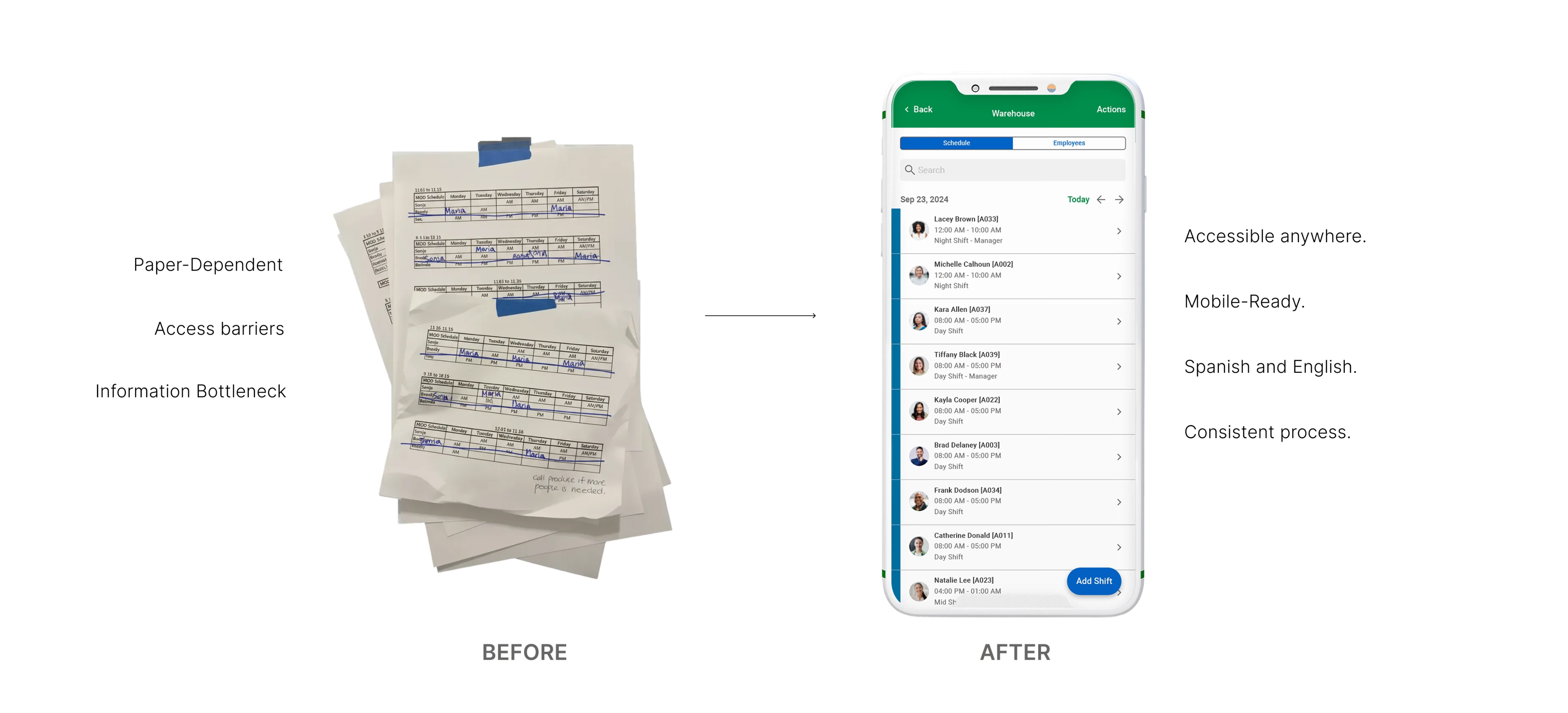
My role
Project Manager with a focus on Service Design:
- User Research → Interviewed leadership, managers and employees, mapped pain points, and identified user + business needs.
- Co-Design & Collaboration → Partnered with HR, leadership, and frontline staff to co-create scalable workflows that balanced business requirements with day-to-day employee needs.
- Inclusive Communication → Designed bilingual training assets (guides, videos) and facilitated workshops to build confidence in the new system.
- Prototyping & Validation → Piloted the solution, gathered feedback, and refined the system through real scheduling workflows and pilot adoption insights.
- Implementation & Adoption → Guided the phased rollout, ensuring consistency across 5 locations and sustained engagement through updates and dashboards.
Project goals
- Implement a scalable, user-friendly digital scheduling solution.
- Ensure an inclusive, bilingual experience to support a diverse workforce.
- Reduce administrative overhead and errors, freeing up time for higher-value tasks.
- Improve schedule accessibility across stakeholders and locations.
- Empower leadership with data-driven decision-making for better workforce planning.
Impact
- Saved nearly 200 manager hours per month previously spent on creating, updating, and communicating schedules.
- Reduced scheduling-related payroll errors by 88%, reducing rework and compliance risk.
- Manager satisfaction almost doubled, increasing from 2.13/5 to 4.07/5 following the implementation.
- Employee engagement with the HRIS platform increased significantly, rising from 86% participation to near-full adoption.
The Challenge
Company’s growing, diverse workforce had outgrown its scheduling system. Managers created schedules in Excel, but employees only saw printed copies in breakrooms, which were often outdated and inconsistent. This caused frustration, scheduling errors, and limited visibility for leadership. The challenge was to configure the existing HRIS system into a scalable, inclusive, and accessible solution that worked for both managers and employees.
Key Problems
Access Barriers
Employees could only view schedules at work locations.
Language Gaps
45% of the workforce, primarily Spanish-speaking, struggled with English-only tools.
Inconsistent Processes
Managers used varying templates and systems, creating confusion.
Error-Prone Workflows
Manual processes led to scheduling conflicts and payroll errors.
Business Risks
Increased Administrative Overhead
Managers spent excessive time on scheduling tasks.
Compliance Risks
Higher risk of labor law violations and audit issues.
Reduced Employee Satisfaction
Frustration with limited schedule accessibility and poor communication.
Inefficient Labor Planning
Limited visibility into staffing patterns and costs.

UCD Process
Research & Discovery
Through interviews and observations, I uncovered core challenges: employees lacked access, managers struggled with inefficiency, and leadership had no clear visibility.
Stakeholder Interviews
Leadership & Decision Makers
Spoke with leadership to understand compliance needs, staffing goals, and system limitations. These conversations shaped how the solution aligned with organizational priorities.
Manager Interviews
People Managers
Walked through scheduling workflows with managers to spot pain points and inefficiencies. Collected feedback on features that would save time, reduce stress, and ease the transition.
Employee Feedback
Front-line Workers
Listened to frontline workers about their challenges with paper schedules, language barriers, and limited access to technology. Identified opportunities for bilingual support, self-service tools, and clearer communication.
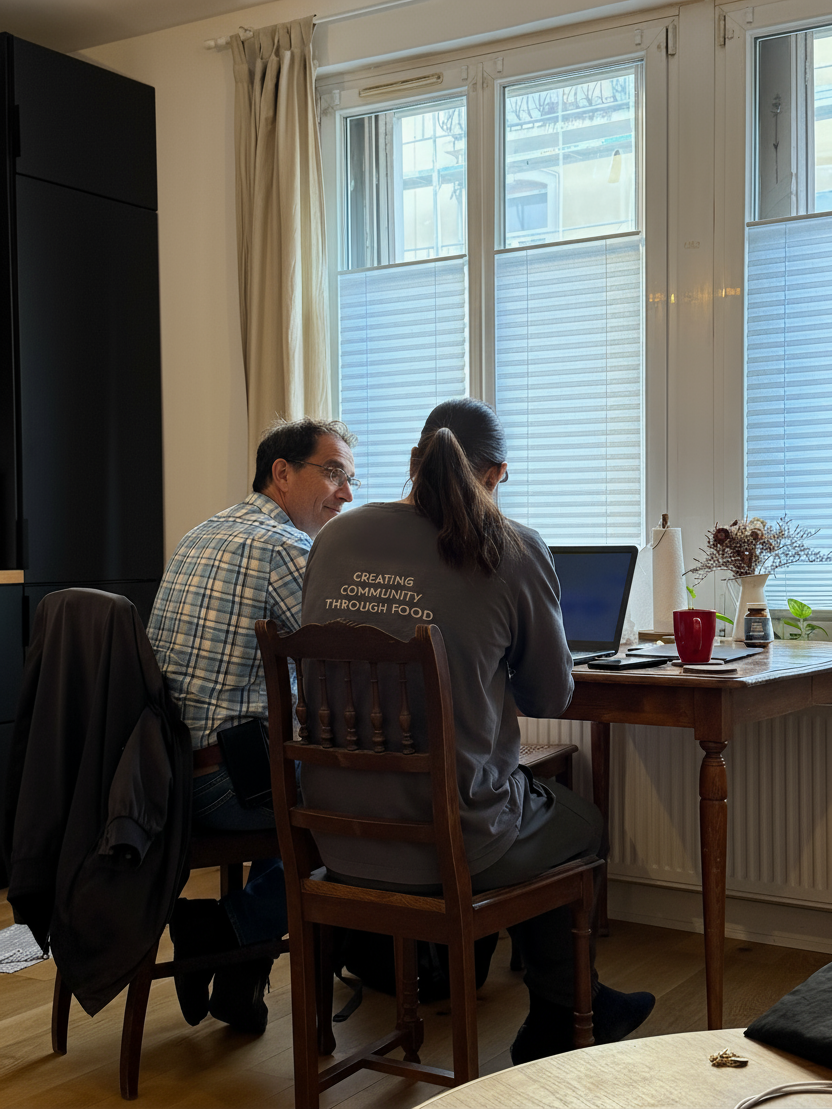
User Journeys: To create a holistic design solution, we created users' journey based on interview and mapped pain points and design values onto the journey. By doing so, we could understand both primary users: Employees and People Managers.
Key Insights - what is needed?
Managers
- Simple and consistent interface
- Faster ways to create and adjust schedules
- Real-time visibility to manage last-minute changes
- Clear guidance, training and support
Employees
- Mobile schedule access (anytime, anywhere)
- Bilingual interface support
- Self-service tools for time-off requests and availability updates
- Real-time notifications
Leadership
- Ensure compliance and accuracy
- Reduced administrative time
- Data-driven insights
- Standardized processes

Design Process
I defined design principles and launched a pilot at the most complex location, building confidence, validating inclusivity, and proving scalability.
Design Principles
Inclusive Access
Leveraged bilingual features and optimized mobile accessibility to support a diverse workforce.
Error Prevention
Implemented system validations and standardized processes to reduce mistakes.
Efficient Workflows
Standardized scheduling processes and optimized available features for seamless operations.
Pilot Location Strategy
Selection Criteria
- Highest ratio of employees to managers
- Significant Spanish-speaking population
- Complex scheduling requirements
- Structured operating hours
Strategic Rationale
Starting with the most challenging location allowed me to thoroughly test system capabilities, validate bilingual support, and build confidence for a full rollout.
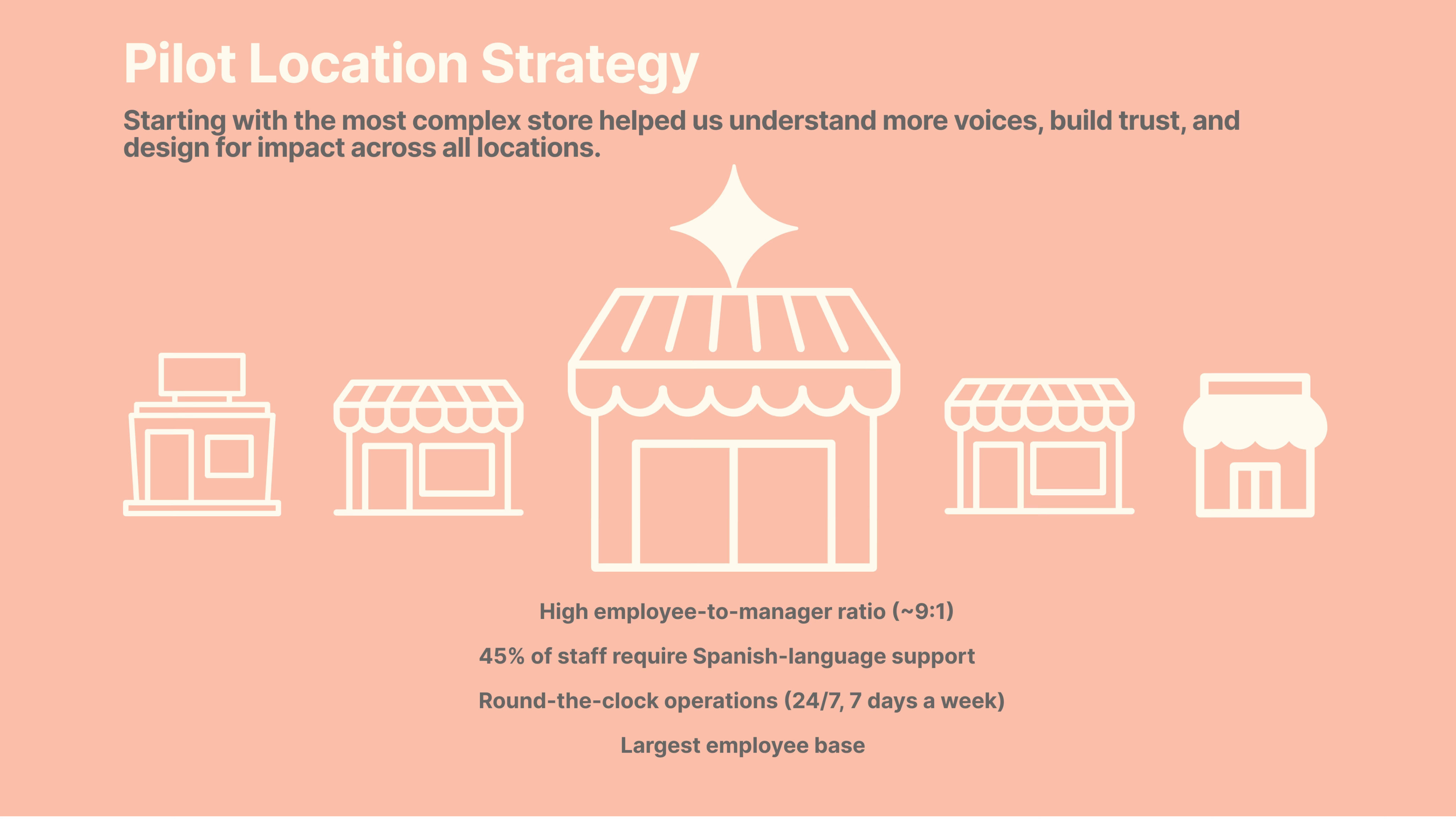
System Setup & Information Architecture
I built both the technical backbone and human-facing resources, defining clear scheduling processes, designing inclusive training, and ensuring scalable adoption.
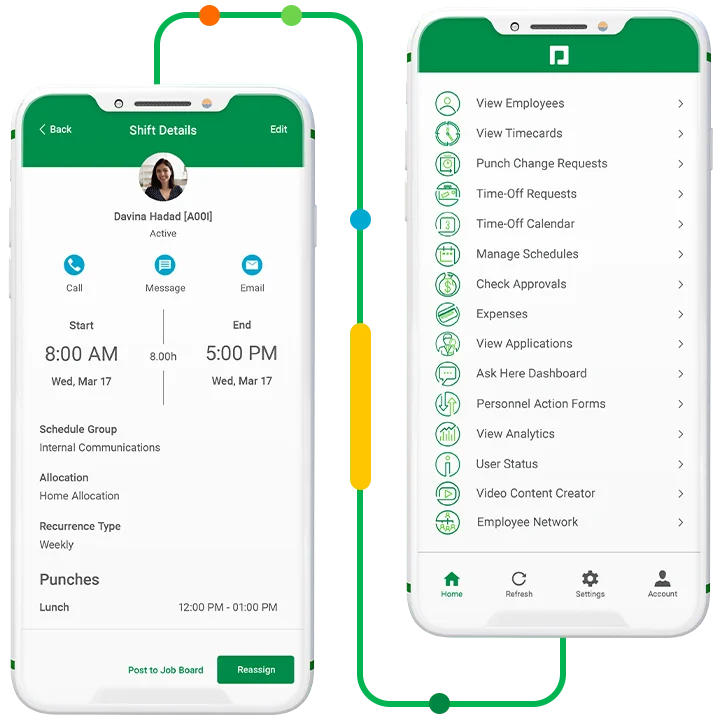
User Support Design
- Defined the scheduling process end-to-end (creation → posting → publishing) by aligning compliance needs, business goals, and stakeholder expectations.
- Created bilingual guides, tutorials, and videos for inclusive onboarding.
- Developed role-specific resources (managers, employees, HR) to address unique needs.
- Documented self-service workflows (PTO, schedule changes) to empower employees.
System Architecture
- Designed the scheduling information architecture, defining roles, locations, and workflows for clarity and scalability.
- Standardized naming conventions to align practices across all locations and reduce confusion.
- Defined role-based permissions to ensure accurate access, accountability, and data security.
- Validated usability through mobile testing across devices, ensuring reliable real-time access for all users.
VALIDATION & Implementation
A phased rollout; Training, testing, and refining, turned initial hesitation into confident adoption across all locations.
Individualized Training Sessions
1.5-hour one-on-one sessions with each manager
Built confidence through one-on-one workshops, using dummy data to demo features and address concerns.
Training Focus
- Hands-on setup
- Step-by-step scheduling
- Real issue troubleshooting
Support Materials
- Bilingual training guides
- Project timeline and checklists
- FAQ handouts and feedback forms
Parallel Testing & Feedback
6-week testing period with iterative refinement
Managers piloted digital + paper schedules in parallel to surface issues and refine processes before full adoption.
Week 1 -2
Initial testing to identify issues
Week 3-4
Feedback collection and system refinement
Week 5-6
Final validation and readiness assessment
Support & Transition
Ongoing support and successful go-live
Ensured a smooth transition with ongoing support and leadership visibility into progress.
Continuous Support
- Regular check-ins
- Open office hours
- Progress monitoring
Successful Transition
- Validated usability
- Centralized updates
- Leadership oversight of rollout
From one-on-one training to full transition, each phase reduced risk and built trust.
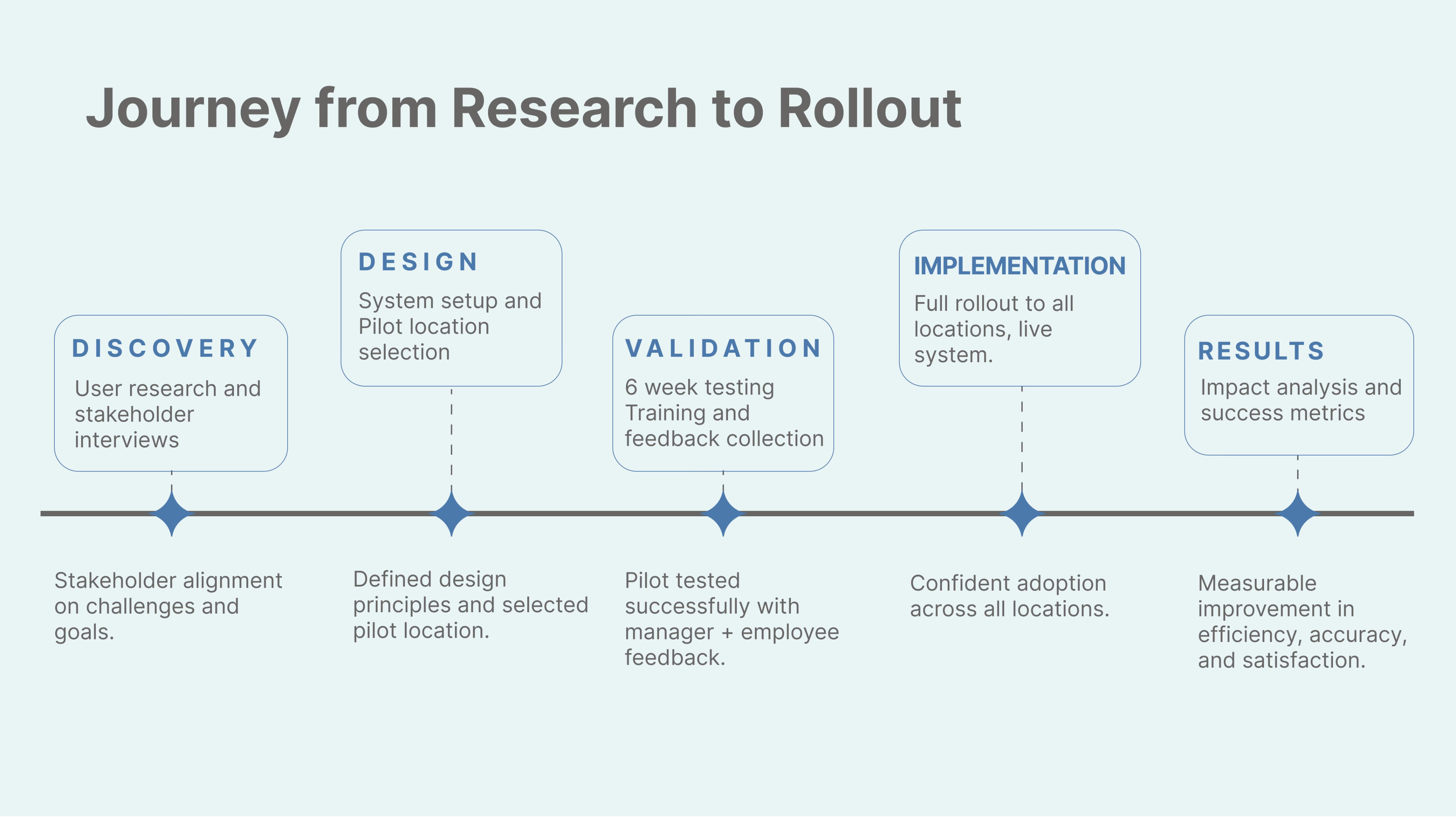
Results & Impact
The rollout cut errors, saved time, and gave employees real-time bilingual access — boosting satisfaction and giving leadership clearer data for decisions.
Quantitative Results
Time Savings
83% Reduction
Error Reduction
88% Decreased Payroll Errors
Employee Satisfaction
90% Increase engagement scores
Employee Engagement
100% Employee adoption
Qualitative Impact
Manager Experience
- Greater confidence in scheduling processes
- Reduced workload, better communication with staff
- Data-driven decisions with real-time visibility
Employee Experience
- Easy mobile access improved visibility and trust
- Faster time-off requests & schedule updates
- Bilingual support fostered inclusivity
Organizational Benefits
- Standardized processes across all locations
- Stronger compliance and audit readiness
- Reliable labor tracking for planning & forecasting
Enablers of Success
Adoption was driven by personalized training, standardized workflows, and bilingual support resources, ensuring smooth rollout across all locations.
Reflections & Learnings
Leading this digital transformation project provided valuable insights into what drives successful implementation and adoption.
What Worked Well
Starting with the most complex location
Validated system in toughest setting, building confidence for broader rollout.
One-on-one training sessions
Built manager confidence through personalized training.
Parallel testing period
Allowed iterative refinement and live-readiness validation.
Regular feedback loops
Fostered continuous improvement and strengthened user buy-in.
Challenges Overcome
Initial resistance to change
Addressed through personalized training and support.
Technology adoption barriers
Overcome with hands-on guidance and patience.
Cross-location coordination
Managed effectively with a phased rollout and strong communication.
Process standardization
Achieved through clear documentation and training.
Future Opportunities
Building on the success of this project, there are several areas for continued improvement and innovation.
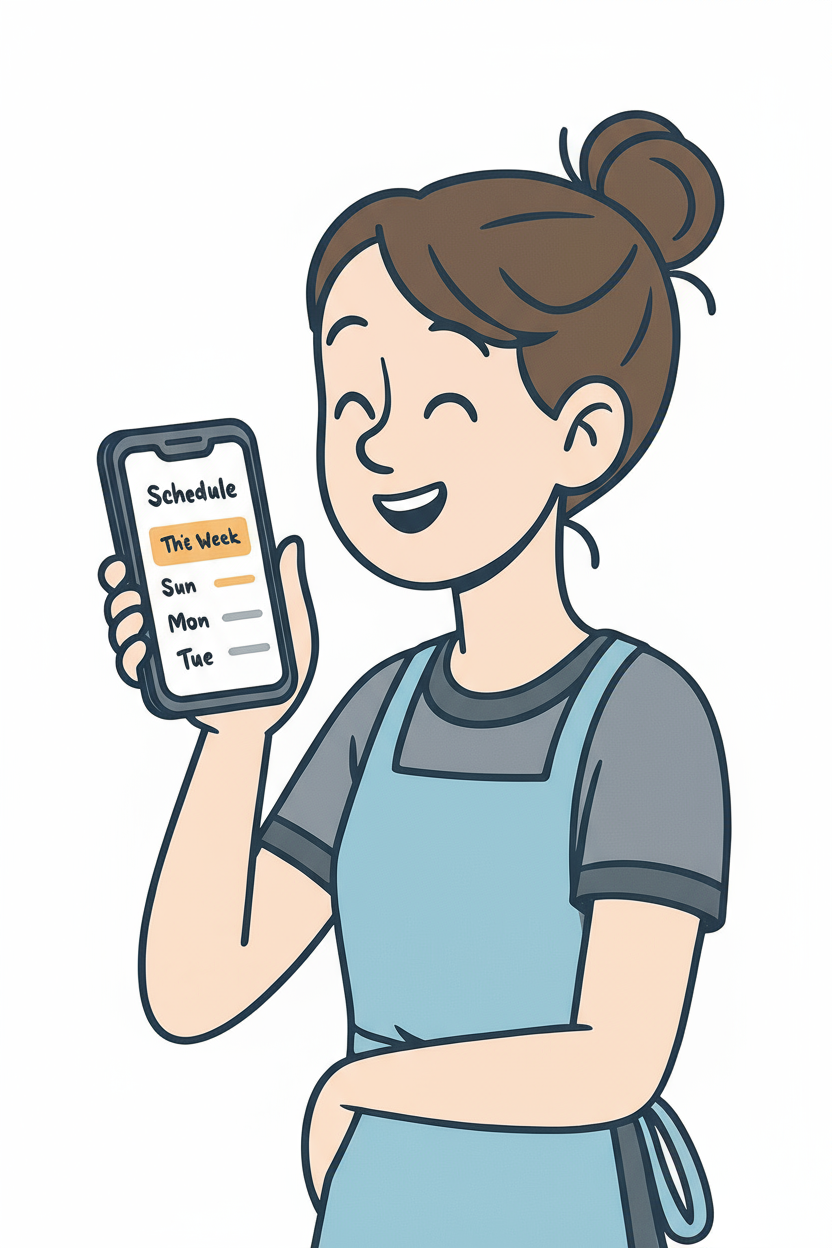
Enhanced Features and Continuous Improvement
- Predictive scheduling for workforce planning.
- Advanced analytics and expanded reporting for strategic insights.
- Collect ongoing user feedback to evolve training and workflows.
- Optimize system based on usage and integrate with other business tools.
A Digital Shift in Workforce Scheduling
First digital integrated scheduling solution for a local company that employs 350+ employees across multiple locations
User Research
Service Design
Bilingual Design
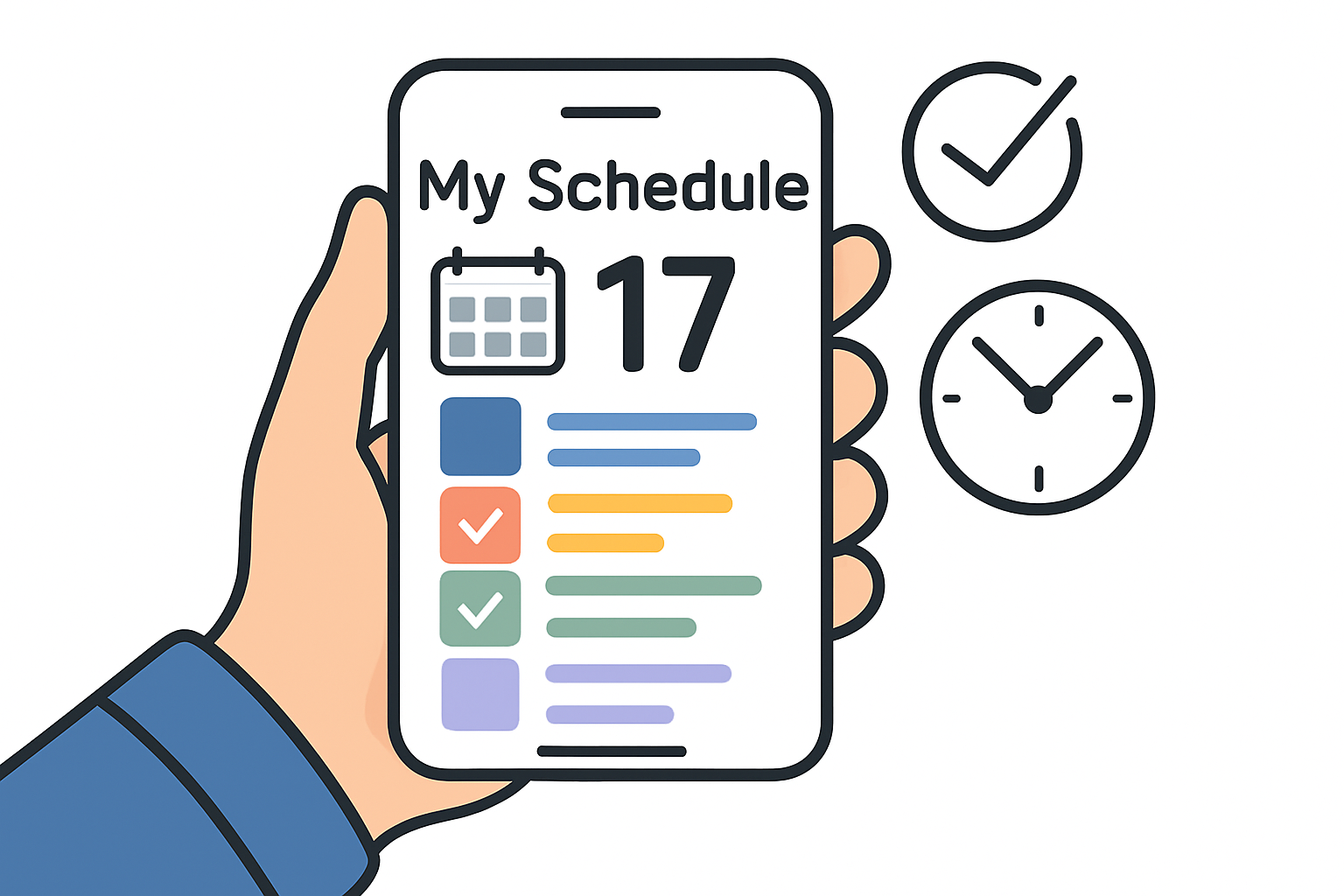
198+
Hours saved each month on scheduling admin
88%
Reduction in payroll errors
90%
Improved Satisfaction
Project Overview
I transformed the company’s error prone scheduling system into an integrated digital platform that saves over 198 hours a month on admin time. Through user research, bilingual design, and collaborative rollout, I created a solution that reduced scheduling errors, simplified workflows for managers, and gave 350+ employees real-time, mobile access to their schedules for the first time.

My role
Project Manager with a focus on Service Design:
- User Research → Interviewed leadership, managers and employees, mapped pain points, and identified user + business needs.
- Co-Design & Collaboration → Partnered with HR, leadership, and frontline staff to co-create scalable workflows that balanced business requirements with day-to-day employee needs.
- Inclusive Communication → Designed bilingual training assets (guides, videos) and facilitated workshops to build confidence in the new system.
- Prototyping & Validation → Piloted the solution, gathered feedback, and refined the system through real scheduling workflows and pilot adoption insights.
- Implementation & Adoption → Guided the phased rollout, ensuring consistency across 5 locations and sustained engagement through updates and dashboards.
Project goals
- Implement a scalable, user-friendly digital scheduling solution.
- Ensure an inclusive, bilingual experience to support a diverse workforce.
- Reduce administrative overhead and errors, freeing up time for higher-value tasks.
- Improve schedule accessibility across stakeholders and locations.
- Empower leadership with data-driven decision-making for better workforce planning.
Impact
- Saved nearly 200 manager hours per month previously spent on creating, updating, and communicating schedules.
- Reduced scheduling-related payroll errors by 88%, reducing rework and compliance risk.
- Manager satisfaction almost doubled, increasing from 2.13/5 to 4.07/5 following the implementation.
- Employee engagement with the HRIS platform increased significantly, rising from 86% participation to near-full adoption.
The Challenge
Company’s growing, diverse workforce had outgrown its scheduling system. Managers created schedules in Excel, but employees only saw printed copies in breakrooms, which were often outdated and inconsistent. This caused frustration, scheduling errors, and limited visibility for leadership. The challenge was to configure the existing HRIS system into a scalable, inclusive, and accessible solution that worked for both managers and employees.
Key Problems
Access Barriers
Employees could only view schedules at work locations.
Language Gaps
45% of the workforce, primarily Spanish-speaking, struggled with English-only tools.
Inconsistent Processes
Managers used varying templates and systems, creating confusion.
Error-Prone Workflows
Manual processes led to scheduling conflicts and payroll errors.
Business Risks
Increased Administrative Overhead
Managers spent excessive time on scheduling tasks.
Compliance Risks
Higher risk of labor law violations and audit issues.
Reduced Employee Satisfaction
Frustration with limited schedule accessibility and poor communication.
Inefficient Labor Planning
Limited visibility into staffing patterns and costs.

User Center Design Process
Research & Discovery
Through interviews and observations, I uncovered core challenges: employees lacked access, managers struggled with inefficiency, and leadership had no clear visibility.
Stakeholder Interviews
Leadership & Decision Makers
Spoke with leadership to understand compliance needs, staffing goals, and system limitations. These conversations shaped how the solution aligned with organizational priorities.
Manager Interviews
People Managers
Walked through scheduling workflows with managers to spot pain points and inefficiencies. Collected feedback on features that would save time, reduce stress, and ease the transition.
Employee Feedback
Front-line Workers
Listened to frontline workers about their challenges with paper schedules, language barriers, and limited access to technology. Identified opportunities for bilingual support, self-service tools, and clearer communication.

User Journeys: To create a holistic design solution, we created users' journey based on interview and mapped pain points and design values onto the journey. By doing so, we could understand both primary users: Employees and People Managers.
Key Insights - what is needed?
Managers
- Simple and consistent interface
- Faster ways to create and adjust schedules
- Real-time visibility to manage last-minute changes
- Clear guidance, training and support
Employees
- Mobile schedule access (anytime, anywhere)
- Bilingual interface support
- Self-service tools for time-off requests and availability updates
- Real-time notifications
Leadership
- Ensure compliance and accuracy
- Reduced administrative time
- Data-driven insights
- Standardized processes

Design Process
I defined design principles and launched a pilot at the most complex location, building confidence, validating inclusivity, and proving scalability.
Design Principles
Inclusive Access
Leveraged bilingual features and optimized mobile accessibility to support a diverse workforce.
Error Prevention
Implemented system validations and standardized processes to reduce mistakes.
Efficient Workflows
Standardized scheduling processes and optimized available features for seamless operations.
Pilot Location Strategy
Selection Criteria
- Highest ratio of employees to managers
- Significant Spanish-speaking population
- Complex scheduling requirements
- Structured operating hours
Strategic Rationale
Starting with the most challenging location allowed me to thoroughly test system capabilities, validate bilingual support, and build confidence for a full rollout.

System Setup & Information Architecture
I built both the technical backbone and human-facing resources, defining clear scheduling processes, designing inclusive training, and ensuring scalable adoption.

User Support Design
- Defined the scheduling process end-to-end (creation → posting → publishing) by aligning compliance needs, business goals, and stakeholder expectations.
- Created bilingual guides, tutorials, and videos for inclusive onboarding.
- Developed role-specific resources (managers, employees, HR) to address unique needs.
- Documented self-service workflows (PTO, schedule changes) to empower employees.
System Architecture
- Designed the scheduling information architecture, defining roles, locations, and workflows for clarity and scalability.
- Standardized naming conventions to align practices across all locations and reduce confusion.
- Defined role-based permissions to ensure accurate access, accountability, and data security.
- Validated usability through mobile testing across devices, ensuring reliable real-time access for all users.
VALIDATION & Implementation
A phased rollout; Training, testing, and refining, turned initial hesitation into confident adoption across all locations.

Individualized Training Sessions
1.5-hour one-on-one sessions with each manager
Built confidence through one-on-one workshops, using dummy data to demo features and address concerns.
Training Focus
- Hands-on setup
- Step-by-step scheduling
- Real issue troubleshooting
Support Materials
- Bilingual training guides
- Project timeline and checklists
- FAQ handouts and feedback forms

Parallel Testing & Feedback
6-week testing period with iterative refinement
Managers piloted digital + paper schedules in parallel to surface issues and refine processes before full adoption.
Week 1 -2
Initial testing to identify issues
Week 3-4
Feedback collection and system refinement
Week 5-6
Final validation and readiness assessment

Support & Transition
Ongoing support and successful go-live
Ensured a smooth transition with ongoing support and leadership visibility into progress.
Continuous Support
- Regular check-ins
- Open office hours
- Progress monitoring
Successful Transition
- Validated usability
- Centralized updates
- Leadership oversight of rollout
From one-on-one training to full transition, each phase reduced risk and built trust.

Results & Impact
The rollout cut errors, saved time, and gave employees real-time bilingual access — boosting satisfaction and giving leadership clearer data for decisions.
Quantitative Results
Time Savings
83% Reduction
Error Reduction
88% Decreased Payroll Errors
Employee Satisfaction
90% Increase engagement scores
Employee Engagement
100% Employee adoption
Qualitative Impact
Manager Experience
- Greater confidence in scheduling processes
- Reduced workload, better communication with staff
- Data-driven decisions with real-time visibility
Employee Experience
- Easy mobile access improved visibility and trust
- Faster time-off requests & schedule updates
- Bilingual support fostered inclusivity
Organizational Benefits
- Standardized processes across all locations
- Stronger compliance and audit readiness
- Reliable labor tracking for planning & forecasting
Enablers of Success
Adoption was driven by personalized training, standardized workflows, and bilingual support resources, ensuring smooth rollout across all locations.
Reflections & Learnings
Leading this digital transformation project provided valuable insights into what drives successful implementation and adoption.
What Worked Well
Starting with the most complex location
Validated system in toughest setting, building confidence for broader rollout.
One-on-one training sessions
Built manager confidence through personalized training.
Parallel testing period
Allowed iterative refinement and live-readiness validation.
Regular feedback loops
Fostered continuous improvement and strengthened user buy-in.
Challenges Overcome
Initial resistance to change
Addressed through personalized training and support
Technology adoption barriers
Overcome with hands-on guidance and patience
Cross-location coordination
Managed effectively with a phased rollout and strong communication.
Process standardization
Achieved through clear documentation and training
Future Opportunities
Building on the success of this project, there are several areas for continued improvement and innovation.

Enhanced Features and Continuous Improvement
- Predictive scheduling for workforce planning.
- Advanced analytics and expanded reporting for strategic insights.
- Collect ongoing user feedback to evolve training and workflows.
- Optimize system based on usage and integrate with other business tools.
